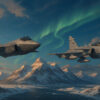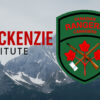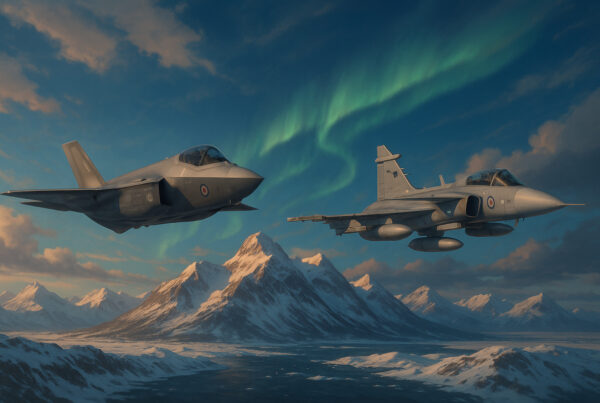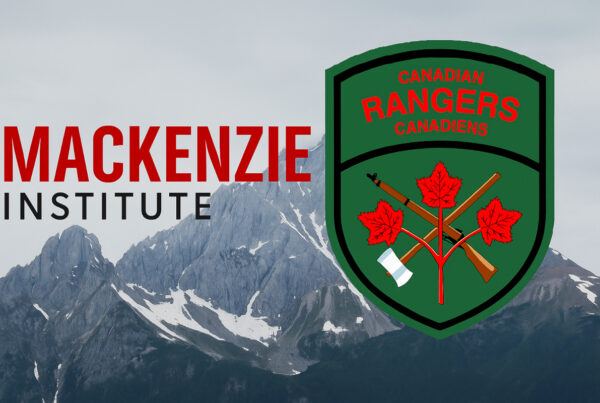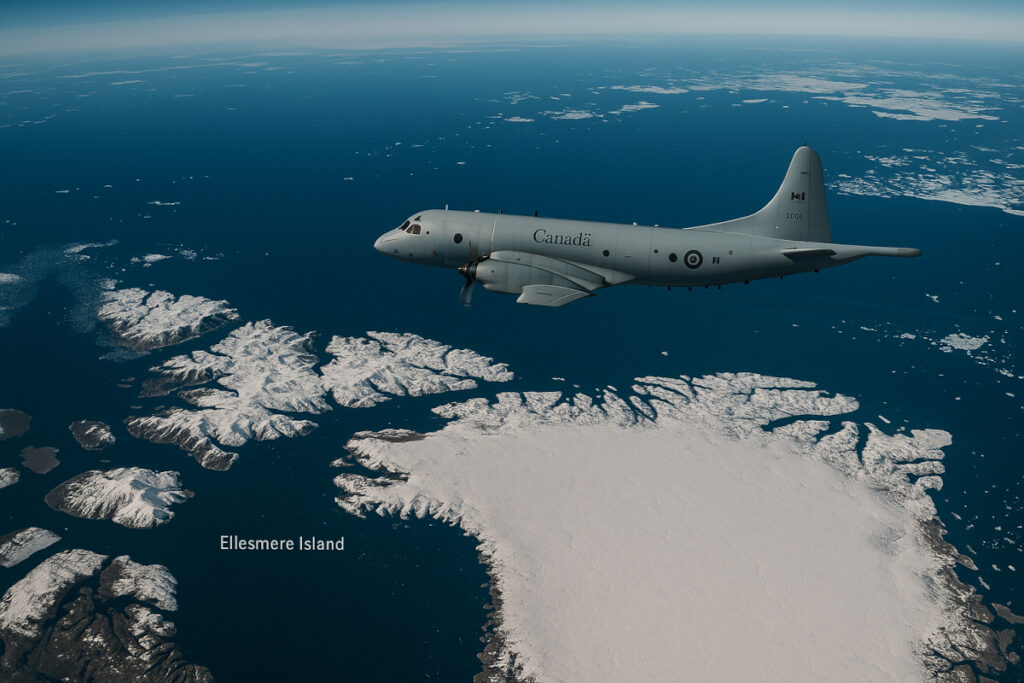 Written by Carter J. Lewis
Written by Carter J. Lewis
Becoming a major NATO player in Arctic security is non-negotiable for Canada. We must assert ourselves and become an Arctic power. The most effective way of projecting Canadian power in the region is by investing in the infrastructure of Baffin and Ellesmere Islands and by engaging with our NATO and allied Arctic Council partners.
The Canadian Armed Forces (CAF) could achieve a full-time significant presence in the region by building three mutually supporting military installations capable of launching air, sea and land operations. Iqaluit and Nanisivik on Baffin Island and Alert on Ellesmere Island must be the foundation of our Arctic Security plan.
A Canadian Forces Base (CFB) in Iqaluit will allow all types of CAF operations on Baffin Island. Operation Boxtop is the CAF’s mission to resupply Canadian Forces Station (CFS) Alert which is just 817 km from the North Pole. Current Boxtop flights of CC-130J Hercules and CC-177 Globemaster IIIs (crewed by RCAF members primarily from 8 Wing Trenton) typically stop at the United States’ Pituffik Space Base in Greenland as a staging area. Being self-sufficient and able to efficiently resupply Alert through CFB Iqaluit, without relying on the Americans, is essential to bringing security to the region and increased prosperity to the people of Nunavut. The importance of being able to support NATO aircraft and ships in this region is crucial and can be achieved by building CFB Iqaluit.
Nanisivik Naval Facility will also be an important component of our Arctic Security plan. Nanisivik is 1,200km North of Iqaluit and will be able to provide forward support to ships operating in the Northwest Passage. Although promises have been made about the beginning of operations at this installation, we have yet to see it in action. Completing and upgrading Nanisivik, as well as healthcare and logistical infrastructure at nearby Arctic Bay, will provide NATO with a forward-fueling and support station close to the Northwest Passage that will provide ships with the ability to remain operational in the region for longer periods of time. These facilities and enhancements further the ability of Canada and NATO to meet threats atop the globe.
CFS Alert maintains signals intelligence facilities to support CAF operations. CFS Alert’s High Frequency and Direction Finding (HFDF) technology gives the station the ability to detect and locate objects of interest. While this has been a significant aspect of the Canadian presence in the Arctic, it has not kept up with the expansion of other nations in the region and is inadequate in projecting the power Canada needs to in order to deter threats and satisfy allies. CFS Alert must be upgraded to a CFB to facilitate significant CAF operations, particularly surveillance and fighter aircraft missions.
Lockheed Aurora aircraft have always played a crucial role in maritime surveillance and have provided Canada with anti-submarine capabilities. To secure our role as a significant Arctic power we must be able to operate Lockheed Aurora, Boeing Poseidon and other surveillance assets in the region, particularly out of Iqaluit and Alert. Having the capacity to detect and scramble aircraft from these bases significantly increases the integrity of our airspace and ensures complete control over our Exclusive Economic Zone (EEZ). With the Gripen E, Saab offers Canada the best fighter aircraft to operate in Arctic conditions. This aircraft would offer the RCAF a long range, multi-role fighter with a top speed of Mach 2 with advanced sensors giving it the capacity of maritime surveillance, as well as ensuring the security of our airspace by maintaining air superiority.
Eureka is a small research base with an airport and military logistics location 400 km south of CFS Alert, and it is an excellent logistical hub for the region. The base consists of the Polar Environment Atmospheric Research Laboratory (PEARL) and Eureka Airport, which includes Fort Eureka where military personnel maintain the installations communication systems. Upgrading Eureka to a CFS would be valuable to all CAF operations in the region.
To safeguard the security of these military installations and increase deterrence we must build surface-to-air missile sites that will be a vital component of our security system. The security of these installations and bases must be assured not only by the RCAF and NORAD, but also by the Canadian Army. Having the capacity to fly our Bell Griffon and Boeing Chinook helicopters out of these bases to support these sites will be crucial. This will also provide the CAF with the opportunity to host unique training operations that would significantly contribute to NATO’s Arctic response capacity.
A Joint Rescue Coordination Centre (JRCC) in Iqaluit will also be a necessary component of a robust Arctic security system. Bringing significant search and rescue capabilities to Iqaluit, as well as upgrading all health facilities on Baffin Island significantly increases the safety of all CAF operations in the region and increases healthcare options for the people of Nunavut. The current three JRCCs in Victoria, Trenton and Halifax are insufficient in supporting increased CAF operations near the Arctic Circle.
If we are to take our national security seriously, then increasing CAF presence in Nunavut and the Arctic Circle is non-negotiable. Having the capacity to patrol the Northwest Passage and the Canadian Arctic with surveillance and fighter aircraft increases our operational capacity in the region. Whether we like it or not, hostile nations will continue to encroach on our territory. If we do not continuously and diligently project power by exerting our presence and control of Canada’s EEZ, there is no way to ensure it will remain Canadian.
Expanding our presence in the Northwest Passage and the Arctic is essential, and reliant upon investments in infrastructure projects which will expand the Canadian security footprint in this region. Bases at Iqaluit, Nanisivik and Alert should maintain a strategic presence from which to project power. Key to this objective is three mutually supporting military installations in the region. Having the capacity to continuously conduct significant Army, Navy and Air Force operations in and near the Arctic Circle would be the first steps taken towards Canada’s long journey to take its place as a formidable Arctic power.
Carter J. Lewis
Sources:
National, Defence. “Government of Canada.” Canada.Ca, / Gouvernement du Canada, 10 Oct. 2018, www.canada.ca/en/department-national-defence/services/operations/military-operations/current-operations/operation-boxtop.html.
National, Defence. Royal Canadian Air Force. “Government of Canada.” Royal Canadian Air Force – Canada.Ca, / Gouvernement du Canada, 27 Feb. 2019, www.canada.ca/en/air-force/corporate/alert.html.
National, Defence. “Government of Canada.” Trenton – Royal Canadian Air Force – Canada.Ca, / Gouvernement du Canada, 11 Aug. 2022, www.canada.ca/en/air-force/programs/search-rescue/joint-rescue-coordination-centre.html.
“JAS 39 Gripen C/d.” Bundeswehr, www.bundeswehr.de/en/ace21-jas-39-gripen-c-d-5605560. Accessed 2 Apr. 2025.


